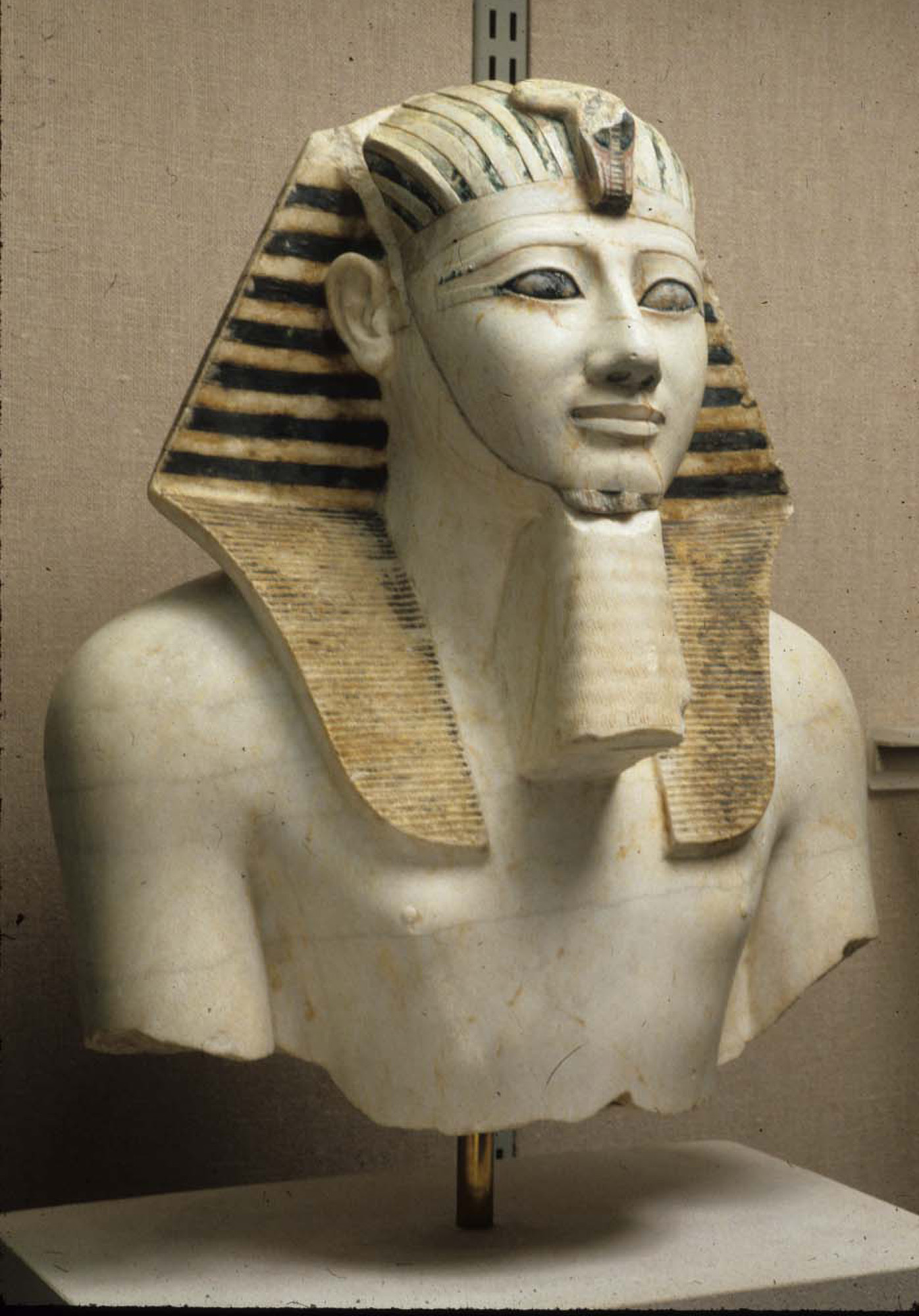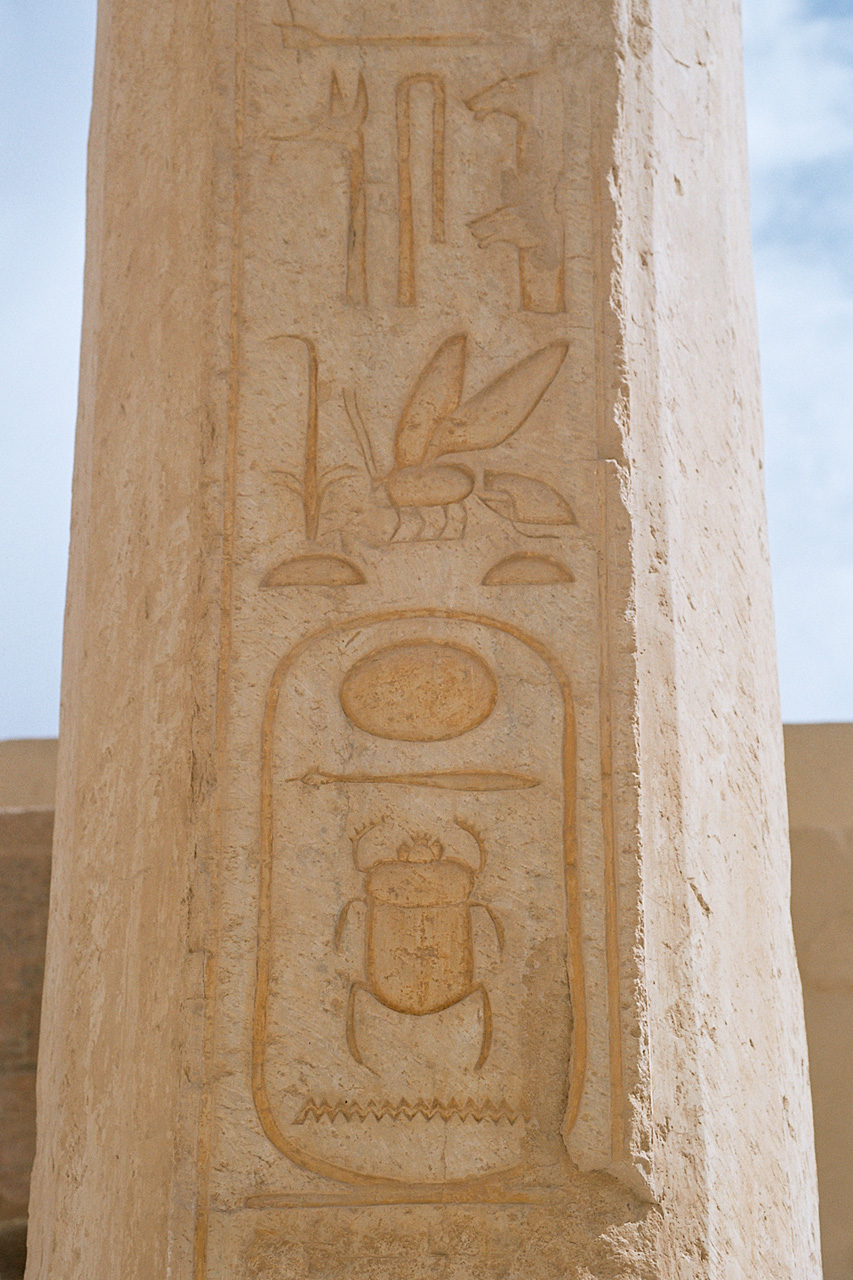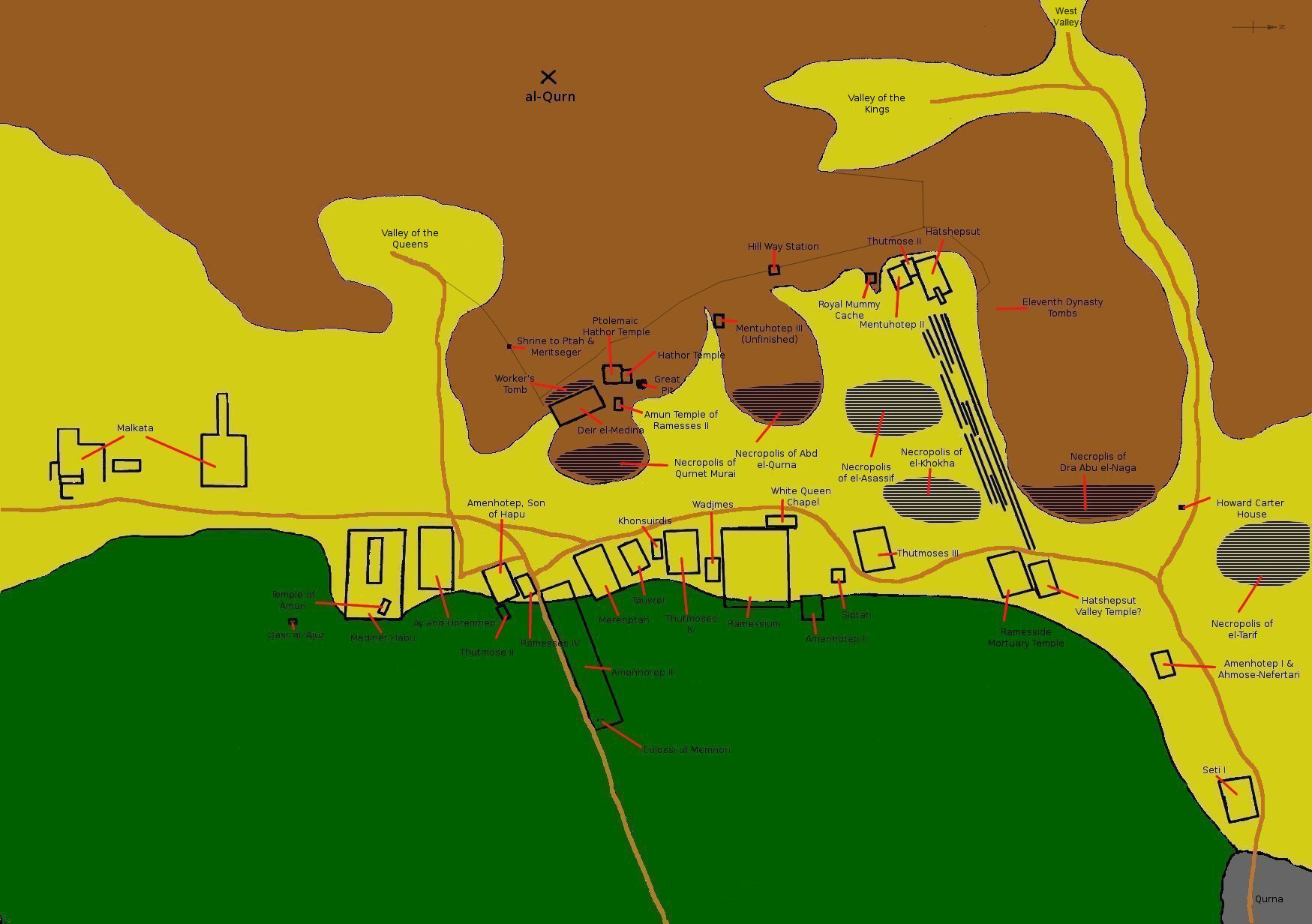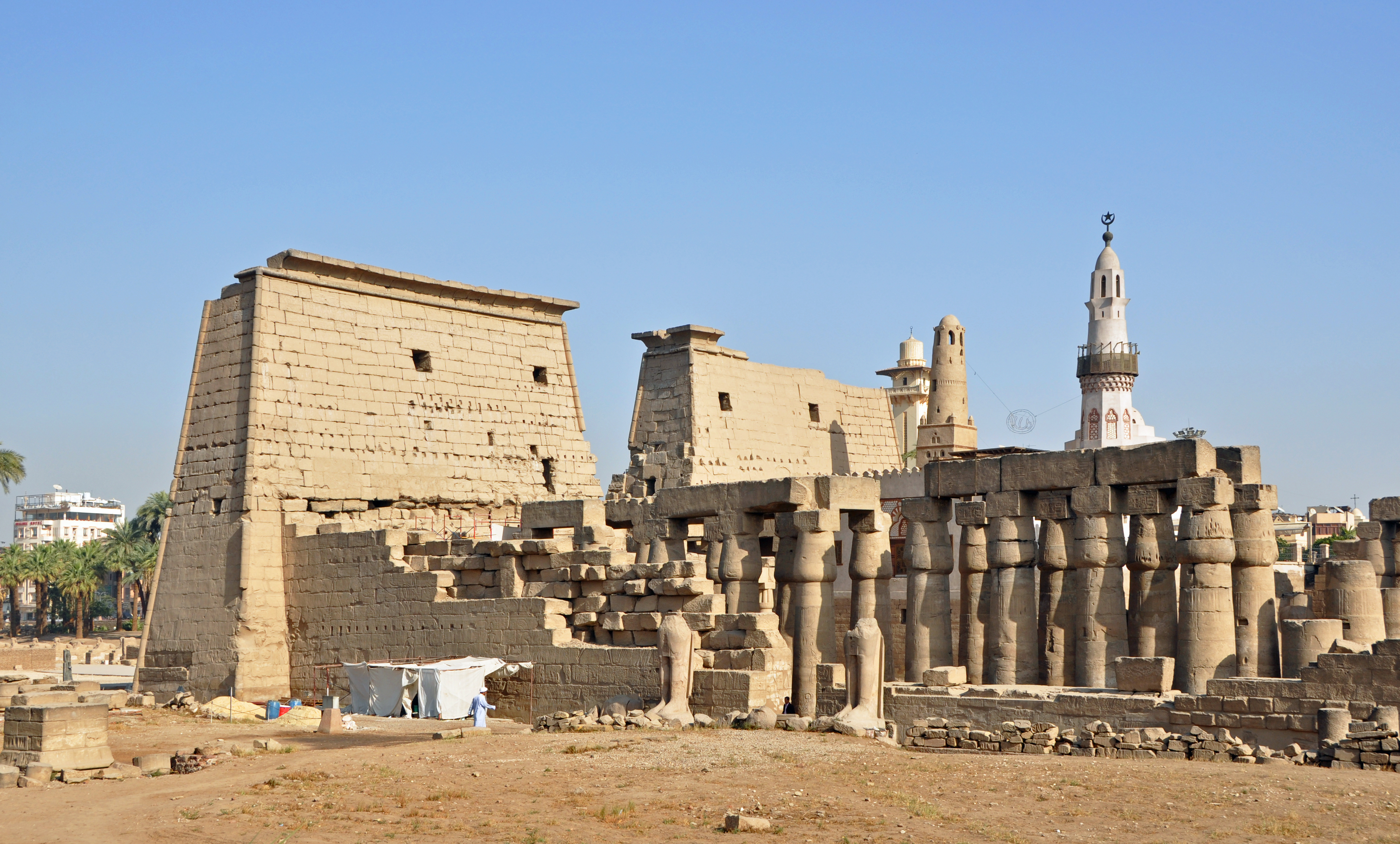|
Sennefer, Chancellor
Sennefer or Senneferi was an ancient Egyptian official during the 18th Dynasty. Biography Son of the lady Sitdhout and married to Taimau, Sennefer started his career under Thutmose II and continued it under Hatshepsut and finally under Thutmose III, when he reached the charges of "Overseer of the Seal" ( treasurer, or chancellor) and "Overseer of the Gold-Land of Amun". Senneferi followed Tay in the office as Overseer of the Seal. Tay was for sure still in year 25 of Thutmose III in office. Senneferi is first attested for sure on a papyrus that dates in the years 28 to 35 of the reign of the same king. A shrine was dedicated to Sennefer at Es-Sibaya, a stone quarrying region some 65 kilometres south of Thebes. He was buried in Theban Tomb 99 ( TT99), located in the Sheikh Abd el-Qurna district of the Theban Necropolis, opposite Luxor. Sennefer seems to have been related to the High Priest of Amun The High Priest of Amun or First Prophet of Amun ('' ḥm nṯr tpj n jmn'' ... [...More Info...] [...Related Items...] OR: [Wikipedia] [Google] [Baidu] |
Tay (treasurer)
Tay was a high official of Ancient Egypt with the main title treasurer. He was in office under Hatshepsut (about 1508–1458 BC) and in the first years of Thutmose III (about 1479 BC to 1425 BC). Tay is only known from three attestations. He appears in a rock inscription on the island of Sehel, in a letter (P.Louvre 3230(b)) that is dated by context under Hatshepsut and from a stela found on Sinai. The latter inscription is dated to year 25 under king Thutmose III. Tay is shown here standing behind the king. According to the rock inscription on Sehel he was on a military campaign with the queen to Nubia. The inscription also provides the throne name Maatkare, of queen Hatshepsut The exact date of the military enterprise is not known for sure, but may have happened in year 12 of the queen. Tay was therefore in office from about year 12 of Hatshepsut till about year 25 under Thutmose III. Under Hatshepsut there is also attested the treasurer Nehsi Nehsi was an official at the court o ... [...More Info...] [...Related Items...] OR: [Wikipedia] [Google] [Baidu] |
Thutmose III
Thutmose III (variously also spelt Tuthmosis or Thothmes), sometimes called Thutmose the Great, was the sixth pharaoh of the Eighteenth Dynasty. Officially, Thutmose III ruled Egypt for almost 54 years and his reign is usually dated from 28 April 1479 BC to 11 March 1425 BC, from the age of two and until his death at age fifty-six; however, during the first 22 years of his reign, he was coregent with his stepmother and aunt, Hatshepsut, who was named the pharaoh. While he was shown first on surviving monuments, both were assigned the usual royal names and insignia and neither is given any obvious seniority over the other. Thutmose served as the head of Hatshepsut's armies. During the final two years of his reign, he appointed his son and successor, Amenhotep II, as his junior co-regent. His firstborn son and heir to the throne, Amenemhat, predeceased Thutmose III. He would become one of the most powerful pharaohs of the 18th dynasty. Becoming the sole ruling pharaoh of the ... [...More Info...] [...Related Items...] OR: [Wikipedia] [Google] [Baidu] |
TT99
The Theban Tomb TT99 is located in Sheikh Abd el-Qurna The necropolis of Sheikh Abd el-Qurna ( ar, شيخ عبدالقرنة) is located on the West Bank at Thebes in Upper Egypt. It is part of the archaeological area of Deir el-Bahari, and named after the domed tomb of the local saint. This is the mo .... It forms part of the Theban Necropolis, situated on the west bank of the Nile opposite Luxor. The sepulchre is the burial place of the ancient Egyptian noble, Senneferi. It has been worked on by an expedition from the University of Cambridge since 1992. HLHM Ostracon The HLHM ostracon, or the Halaḥam inscription is a limestone shard, discovered during the excavation of tomb TT99 in Thebes, bearing lines of hieratic and hieroglyphic characters on two sides written in black ink. This inscription bears a lesser-known letter order of early Semitic script, known as "Halaham", and is believed to date as old (circa fifteenth century BCE) as the tomb itself. These lettered i ... [...More Info...] [...Related Items...] OR: [Wikipedia] [Google] [Baidu] |
Thutmose II
Thutmose II (sometimes read as Thutmosis or Tuthmosis II, Thothmes in older history works in Latinized Greek; Ancient Egyptian: /''ḏḥwty.ms''/ ''Djehutymes'', meaning "Thoth is born") was the fourth Pharaoh of the Eighteenth Dynasty of Egypt. His reign is generally dated from 1493 to 1479 BC. His body was found in the Deir el-Bahri Cache above the Mortuary Temple of Hatshepsut and can be viewed today in the National Museum of Egyptian Civilization in Cairo. Family Thutmose II was the son of Thutmose I and a minor wife, Mutnofret. He was, therefore, a lesser son of Thutmose I and chose to marry his fully royal half-sister, Hatshepsut, in order to secure his kingship. While he successfully put down rebellions in Nubia and the Levant and defeated a group of nomadic Bedouins, these campaigns were specifically carried out by the king's Generals, and not by Thutmose II himself. This is often interpreted as evidence that Thutmose II was still a minor at his accession. Thutmose I ... [...More Info...] [...Related Items...] OR: [Wikipedia] [Google] [Baidu] |
Hatshepsut
Hatshepsut (; also Hatchepsut; Egyptian: '' ḥꜣt- špswt'' "Foremost of Noble Ladies"; or Hatasu c. 1507–1458 BC) was the fifth pharaoh of the Eighteenth Dynasty of Egypt. She was the second historically confirmed female pharaoh, after Sobekneferu. (Various other women may have also ruled as pharaohs or at least regents before Hatshepsut, as early as Neithhotep around 1,600 years prior.) Hatshepsut came to the throne of Egypt in 1478 BC. As the principal wife of Thutmose II, Hatshepsut initially ruled as regent to Thutmose III, a son of Thutmose II by another wife and the first male heir. While Thutmose III had inherited the throne at about two years old, Hatshepsut continued to rule by asserting her lineage as the daughter and only child of Thutmose I and his primary wife, Ahmose. Her husband Thutmose II was the son of Thutmose I and a secondary wife named Mutnofret, who carried the title 'King's daughter' and was probably a child of Ahmose I. Hatshepsut and Thutmos ... [...More Info...] [...Related Items...] OR: [Wikipedia] [Google] [Baidu] |
Treasurer (Ancient Egypt)
The Treasurer (or often also translated as Chancellor) in Ancient Egypt is the modern translation of the title ''imi-r ḫtmt'' (word by word: ''Overseer of the Seal'' or ''Overseer of sealed things''). The office is known since the end of the Old Kingdom, where people with this title appear sporadically in the organization of private estates. In the Middle Kingdom, the office became one of the most important ones at the royal court. At the end of the 18th Dynasty, the title lost its importance, although the famous Bay had this office. In the later New Kingdom the function of a treasurer was overtaken by the ''overseer of the treasury''. The treasurer was responsible for products coming to the royal palace. They were the main economic administrator of the royal belongings. Middle Kingdom title holders * Bebi, was later appointed vizier, under Mentuhotep II *Kheti, under Mentuhotep II *Meketre, under Mentuhotep II and after *Ipi, under Amenemhet I *Rehuerdjersen, under Amen ... [...More Info...] [...Related Items...] OR: [Wikipedia] [Google] [Baidu] |
Sheikh Abd El-Qurna
The necropolis of Sheikh Abd el-Qurna ( ar, شيخ عبدالقرنة) is located on the West Bank at Thebes in Upper Egypt. It is part of the archaeological area of Deir el-Bahari, and named after the domed tomb of the local saint. This is the most frequently visited cemetery on the Theban west bank, with the largest concentration of private tombs. Tombs * TT21 User, Scribe, Steward of king Thutmose I * TT22 Wah, later usurped by Meryamun * TT23 – Tjay * TT30 Khonsmose, Amun treasury official, Ramesside * TT31 – Khonsu * TT38 Djeserkaraseneb, Scribe, Counter of grain in the granary of the divine offerings of Amun * TT41 Amenemopet called Ipy, Amun temple high steward * TT42 Amenmose, Captain of troops, Eyes of the King in the Two Lands of the Retenu * TT43 Neferrenpet, Overseer of the kitchen (stores?) of Pharaoh * TT44 Amenemhab, wab-priest in front of Amun * TT45 Djehuty, Steward of high priest of Amun Mery * TT46 Ramose, Steward of the Mansion of the At ... [...More Info...] [...Related Items...] OR: [Wikipedia] [Google] [Baidu] |
Theban Necropolis
The Theban Necropolis is a necropolis on the west bank of the Nile, opposite Thebes (Luxor) in Upper Egypt. It was used for ritual burials for much of the Pharaonic period, especially during the New Kingdom. Mortuary temples * Deir el-Bahri ** Mortuary temple of Hatshepsut ** Mortuary temple of Mentuhotep II ** Mortuary temple of Thutmose III * Medinet Habu ** Mortuary temple and palace of Ramesses III ** Mortuary Temple of Ay & Horemheb * Mortuary Temple of Amenhotep III ** Colossi of Memnon * Mortuary Temple of Merneptah * Mortuary Temple of Ramesses IV * Mortuary Temple of Thutmose IV * Mortuary Temple of Thutmose III * Mortuary Temple of Twosret * Temple of Nebwenenef * Qurna ** Mortuary Temple of Seti I * Mortuary Temple of Amenhotep II * Ramesseum (Mortuary Temple of Ramesses II) Royal Necropolis * Valley of the Kings (Modern: "''Wadi el-Muluk''") * Valley of the Queens (Modern: "''Biban el-Harim''") * Royal Cache * Bab el-Gasus Necropolis * Deir el-Medin ... [...More Info...] [...Related Items...] OR: [Wikipedia] [Google] [Baidu] |
Luxor
Luxor ( ar, الأقصر, al-ʾuqṣur, lit=the palaces) is a modern city in Upper (southern) Egypt which includes the site of the Ancient Egyptian city of ''Thebes''. Luxor has frequently been characterized as the "world's greatest open-air museum", as the ruins of the Egyptian temple complexes at Karnak and Luxor stand within the modern city. Immediately opposite, across the River Nile, lie the monuments, temples and tombs of the west bank Theban Necropolis, which includes the Valley of the Kings and Valley of the Queens. Thousands of tourists from all around the world arrive annually to visit Luxor's monuments, contributing greatly to the economy of the modern city. The population of Luxor is 422,407 (2021), with an area of approximately . It is the capital of Luxor Governorate. It is among the oldest inhabited cities in the world. Etymology The name ''Luxor'' ( ar, الأقصر, al-ʾuqṣur, lit=the palace, pronounced , , Upper Egyptian: ) derives from the Arabic ... [...More Info...] [...Related Items...] OR: [Wikipedia] [Google] [Baidu] |
High Priest Of Amun
The High Priest of Amun or First Prophet of Amun ('' ḥm nṯr tpj n jmn'') was the highest-ranking priest in the priesthood of the ancient Egyptian god Amun. The first high priests of Amun appear in the New Kingdom of Egypt, at the beginning of the Eighteenth Dynasty. History The priesthood of Amun rose in power during the early Eighteenth dynasty through significant tributes to the god Amun by ruler such as Hatshepsut and more importantly Thutmose III. The Amun priesthood in Thebes had four high-ranking priests: * The Chief Prophet of Amun at Karnak (''ḥm nṯr tpj n jmn''), also referred to as the Chief Priest of Amun. * The Second Prophet of Amun at Karnak (''ḥm nṯr snnw n jmn''), also referred to as the Second Priest of Amun. * The Third Prophet of Amun at Karnak (''ḥm nṯr ḫmtnw n jmn khemet-nu''), also referred to as the Third Priest of Amun. * The Fourth Prophet of Amun at Karnak (''ḥm nṯr jfdw n jmn''), also referred to as the Fourth Priest of Amun. T ... [...More Info...] [...Related Items...] OR: [Wikipedia] [Google] [Baidu] |



